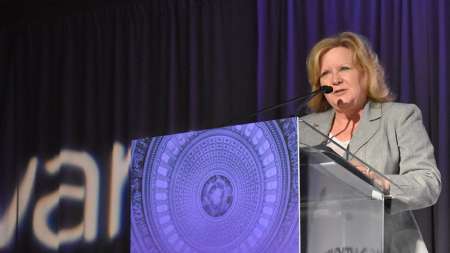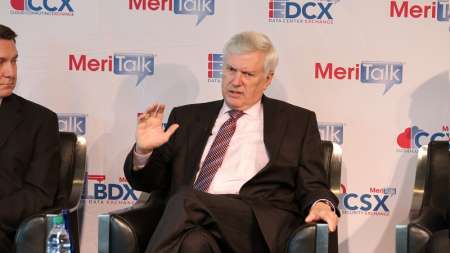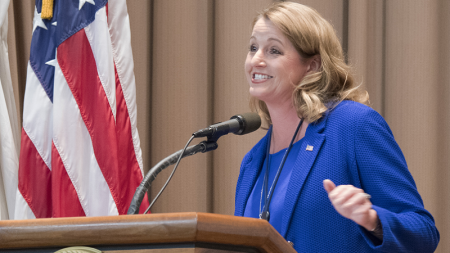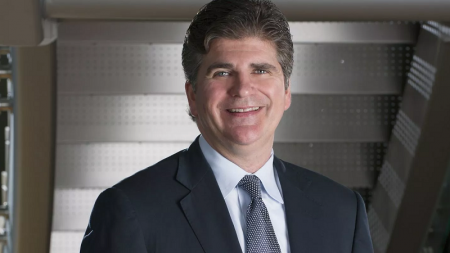The Department of Defense (DoD) on Tuesday released a justification and approval (J&A) document that says DoD is expanding the scope of the contract for its Electronic Health Record (EHR) system known as MHS Genesis. The document says that the contract must be expanded to achieve “a single standard baseline solution” with the new Department of Veterans Affairs EHR and also to incorporate the U.S. Coast Guard into the DoD EHR. […]
After the National Defense Authorization Act (NDAA) for FY 2019 cleared a major hurdle late yesterday with the release of a conference report that reconciles differences between House and Senate versions of the bills, techies across the Federal government are finding that IT modernization and innovation amendments for the Pentagon fared well in the legislation. […]
Using digital records instead of paper-based ones can save government agencies money and help them provide better service to their constituencies, said speakers during Government Technology’s “Going Paperless: How to Do It and What You Will Gain” webinar on July 11. […]
At today’s TBM Council Public Sector Summit, three government leaders stressed the importance of evolving the Federal government’s Capital Planning and Investment Control (CPIC) process and the role Technology Business Management (TBM) can play in that evolution. […]
Even as Apple went public yesterday with a new mobile device operating system intended to close security loopholes that law enforcement agencies were using to access locked devices, one digital forensics firm said it found a workaround to bypass the new security features for a cost of about forty bucks. […]
Welcome to MeriTalk News Briefs, where we bring you all the day’s action that didn’t quite make the headlines. No need to shout about ‘em, but we do feel that they merit talk. […]
Welcome to MeriTalk News Briefs, where we bring you all the day’s action that didn’t quite make the headlines. No need to shout about ‘em, but we do feel that they merit talk. […]
Rod Turk, acting chief information officer at the Department of Commerce, said Thursday at MeriTalk’s 2018 Cloud Computing Brainstorm that the commodification of IT is changing the service delivery model to make shared services an inevitability, and agencies need to shift their thinking to adapt. Turk outlined his guiding principles for priming agencies for the shared services revolution and provided a set of process questions to aid in implementation. […]
The House Subcommittee on Digital Commerce and Consumer Protection met today to discuss the emerging field of quantum computing, and how the still-nascent sector requires more attention in terms of funding and human capital. […]
User-centered, citizen-based design must be at the heart of government technology initiatives in the next decade, and diversity at the decision-making table must inform the outcome of those efforts, said Federal CIO Suzette Kent. […]
Reps. Bill Foster, D-Ill., and Mark Takano, D-Calif., deserve a big thumbs up for introducing legislation on Thursday to reopen the Office of Technology Assessment–OTA. Sen. Ron Wyden, D-Ore., will lead the charge in the Senate. […]
Opening day for the Nationals might be a week away, but four Beltway insiders have already knocked one out of the park. The latest omnibus spending bill, which passed through the Senate early Friday morning, includes $100 million for the MGT Act’s centralized revolving capital fund. President Trump signed the MGT Act into law late last year as an amendment to the National Defense Authorization Act. […]
On Tuesday, President Trump released his management agenda, which focused heavily on his IT modernization goals. Top of mind for the administration? Improving the customer experience, helping agencies better deliver on their missions, and reducing costs to the taxpayer. […]
The House subcommittees on Information Technology and Government Operations held a “State of Play” Federal IT Hearing Wednesday for the latest updates on ongoing modernization efforts, and the tone was resolute and unflinching. […]
Gary Newgaard is a giant in the government IT industry. For those of you who don’t know him, I’m not just saying that–I’m six feet tall and standing next to Gary makes me feel like I should join the lollipop league. […]
Rather than focusing on technology, Compuware’s CEO Chris O’Malley believes Federal CIOs need to focus on people. A little strange coming from a tech CEO, but Chris seems to be on to something. Compuware is a reinvigorated 40-something mainframe software company based in Detroit in a tech space populated with young Californian cloud/agile upstarts–but O’Malley […]
Until now, most Federal agencies built their computing architectures like the aging buildings that house most of their headquarters, as huge monolithic structures that are inefficient, require frequent maintenance, and are wholly inflexible. Now, companies like Red Hat are offering a new path using microservices technology, which takes huge application stacks and breaks them down into tiny, modular components that can expand or contract based on needs, eliminating waste while ensuring critical services are always available regardless of future usage spikes. […]
David Egts, chief technologist for Red Hat public sector has some words of wisdom for Federal managers seeking ways to move from legacy applications to more agile environments: modernization is not just about adopting new technologies and practices, it is about what happens to the old ones. […]
Sometime in May, the Army will take two armed, autonomous Humvees out onto a gunnery range to test and certify them as combat vehicles, which will make them the first robotic ground vehicles to be OK’d for combat. […]
Verizon is walking the talk on innovation–appointing a new innovation czar to infuse next-generation technologies into its public sector and education offerings. […]
A lot of the Army’s most high-profile modernization projects concern complex, expensive weapons systems that emerge from research and development, budgeting, and procurement process inside the halls of the Pentagon and other facilities and outside of the experience of most people. But some key elements of the Army’s efforts to keep pace with the demands of a changing world are so familiar to people at home, at work, or in a coffee shop that they take them for granted. An example of this is good, reliable Wi-Fi. […]
We see lots of moves to IT modernization in motion–but how does it all come together? The White House wants to tie those into a broader program, creating a new ecosystem to fuel government-wide modernization efforts. […]
As momentum continues to build for agencies to implement strategies and technologies to modernize their IT environments, agency managers will have to be careful to avoid missteps that could hamper successful digital transformation. […]
The Report to the President on Federal IT Modernization recommends modernizing the Trusted Internet Connections (TIC) program, which is critical to the Federal government’s broader digital transformation strategy. By the end of this month, the report calls for the Office of Management and Budget (OMB) to conduct data calls to agencies to discuss their cloud migration projects, and identify any delays caused by current TIC policy. And, by March 2, OMB will share a “preliminary update to the TIC policy,” and launch select pilot projects to test the new TIC requirements. […]
The Modernizing Government Technology Act (MGT) and other related initiatives are pushing agencies to move away from aging, legacy applications as well as costly, complex software projects. The goal is to have more secure, agile, and cost-effective IT infrastructures replace them. […]
The military’s use of unmanned, and even semi-autonomous aircraft has been extensive, but no one’s ever pretended that it would be as easy as point-and-click. That day could be getting closer however, as the Marine Corps recently demonstrated how autonomous helicopter flights could clear a few final hurdles and move towards more widespread military use. […]
The General Services Administration’s (GSA) Emerging Citizen Technology Office (ECTO) is working with a network of partners from more than 300 Federal, state, and local government entities to help evaluate, test, and implement IT modernization initiatives with emerging technologies. […]
Last year brought a great deal of change to Washington, D.C., from a new administration moving into the White House to D.C. United building a new stadium. As 2018 starts up with seemingly limitless IT opportunities ahead, MeriTalk takes a look back on the top Federal IT stories from 2017. […]
Communication is key–especially for the Federal government. One of the most important ways the government communicates with citizens is through agency websites. In fact, the Federal government has roughly 4,500 websites on more than 400 domains. However, the vast majority of those websites aren’t meeting industry standards. […]
North Korea’s persistent efforts on nuclear weapons development and some loose talk about red buttons have raised new fears internationally about the possibilities of nuclear conflict. At home, government agencies also are addressing the questions about what to do in the case of a nuclear detonation. The Centers for Disease Control and Prevention (CDC), for example, will hold one of its Public Health Grand Round teaching sessions Jan. 16 on how medical professionals should respond–and although the event has been planned for months, it’s timing suddenly seems to be on the mark. […]



























